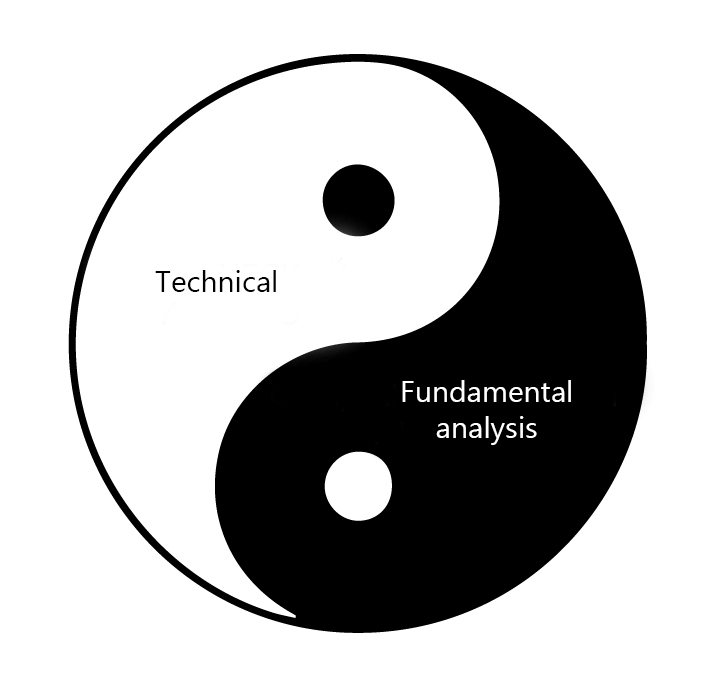- AME CAPITALS
- Trading Technology
- Help AME Trading
Part I. Introduction to Forex Analysis Methods
When entering a casino, a person knowingly plays under disadvantageous conditions, as the odds are always in favor of the establishment. However, Forex trading is different - the probability of winning can be controlled by using market analysis tools. Therefore, it is possible to develop a trading strategy that can generate a stable income. Before you start trading Forex with real money, thoroughly study the material in this section and practice applying the knowledge gained on a demo account. Once you learn to "feel" the market and understand the forces that move it, you will be able to start growing your capital. However, without a thoughtful approach, your Forex trades can truly turn into a game of roulette - you either guess the direction of the exchange rate movement or you don't. Some may think that the probability of winning in such a case is 50/50, but practice shows that without a thoughtful and systematic approach to trading in financial markets, you have no chance of success at all.
There are two types of analysis in financial markets:
- Technical analysis;
- Fundamental analysis.
These types of analysis are successfully used not only in the spot forex market but also in the stock market, futures market, and options market. Some sources may mention additional types of analysis, such as probabilistic and psychological analysis. However, these types of analysis are subsets of technical and fundamental analysis and are already included in their tools.
Technical analysis is based on the belief that history tends to repeat itself. It is believed that the mechanism of currency exchange rate movements is predetermined and can be calculated by analyzing retrospective data (data from past time periods). A trader who uses technical analysis plots charts of currency exchange rate movements over a past period of time. They draw various lines and figures on these charts, calculate mathematical indicators, and thus determine the most likely direction and extent of future currency exchange rate movements. The main task of technical analysis is to identify the trend, i.e., the tendency of currency exchange rate movements (upward or downward). In English literature on Forex, the phrase "the trend is your friend" is often used. This statement holds true because the ability to correctly identify the trend can make you a successful trader.
Fundamental analysis is based on the belief that the health of a country's economy determines the value of its national currency in the forex market. The better the economic condition of a country, the higher the value of its currency, and vice versa. Therefore, to make decisions about opening long or short positions on a currency, financial indicators (such as inflation rate, interest rate, balance of payments, etc.), as well as economic, social, and political news, are analyzed.
Like in any other field, there are staunch advocates and opponents of different types of analysis in forex analysis and forecasting. Some traders solely rely on charts and technical analysis indicators, neglecting fundamental analysis. On the other hand, some traders exclusively rely on economic, social, and political news, disregarding technical analysis. However, both approaches can lead to errors, as successful forex trading is only possible when both types of analysis are used in combination, forming a unified trading strategy. An analogy can be drawn between technical analysis and fundamental analysis in forex and the Chinese philosophy of Yin and Yang, where the two complementary forces together create a balanced and effective approach.

Indeed, if you are a staunch advocate of technical analysis, events that influence financial markets, such as natural disasters, terrorist attacks, or the release of important financial indicators that deviate from expectations, can easily lead to losses. Such events can cause currency rates to move in unexpected ways that cannot be predicted by any technical indicator. On the other hand, if you are a staunch advocate of fundamental analysis, you may encounter situations where currency rates fluctuate despite a perceived calm in economic news worldwide, as currencies are constantly being bought and sold.
Therefore, the only path to success is to use a combination of both technical and fundamental analysis in your forex trading. Build charts, draw trend lines, use various indicators to forecast currency movements, but also stay informed about the release of crucial economic, social, and political news worldwide.
In the Forex market, there are traders with different levels of activity. Some open and close positions every hour, attempting to "capture" favorable exchange rate fluctuations in the very short term. Others open positions with the intention of closing them after several weeks or even months, which corresponds to medium-term and long-term perspectives. Technical analysis is well suited for short-term and medium-term currency trades. When engaging in long-term trades, it is necessary to consider fundamental analysis because over longer periods of time, numerous events occur worldwide that can fundamentally alter the established trend for a particular currency pair.
In the following two parts of this section, technical analysis and fundamental analysis will be thoroughly examined. The main types of charts, patterns, indicators, and financial indicators will be discussed. By studying the material in this section, you will learn to forecast currency exchange rate movements in Forex, thus taking another step towards improving your trading skills.






